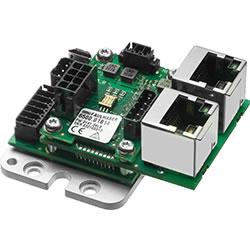Reducing Energy Loss and Improving Safety in Glass Production with Acoustic Imaging
Precision and efficiency define modern glass production, but undetected compressed air and gas leaks threaten both.
Flir's acoustic imaging technology helps manufacturers find and fix leaks fast, turning invisible losses into measurable energy savings and improved safety across every stage of production.
A Half-Century of Innovation Transforming the Global Glass Industry
The global glass industry is worth over 120 billion dollars a year. The market is generally split into different segments such as flat glass, container glass and speciality products. The industry has changed significantly in the past few decades. In the early 1970s, the global glass industry was dominated by conventional manufacturing methods, such as the sheet glass and plate glass processes. However, by the mid-1970s, float glass plants were being built across Europe, North America, and Japan. The process significantly improved surface quality, reduced production costs, and allowed glass to be produced in much larger sheets, laying the groundwork for the modern architectural glass we know today.
During the 1980s and 1990s, the glass industry began diversifying its applications and introducing higher-performance products. In addition, coated and insulated glass units emerged in response to the growing demand for energy-efficient buildings. Low-emissivity coatings in the form of thin layers of metal oxide applied to the surface, helped control solar heat gain while maintaining transparency. This development was a key step toward the energy-saving glass that dominates the market today.
Simply put, the glass industry has undergone a remarkable transformation over the past 50 years. Many of these changes have been driven by environmental and ecological concerns. This statement applies not only to the end product but also the production process itself. The heavy reliance on fossil fuels has also changed over the years. The early 21st century saw advances in automation, robotics, and digital controls revolutionise production. Glass manufacturing became more efficient, consistent, and data driven. Computer controlled furnaces, real-time quality monitoring, and automated cutting systems improved output while reducing waste.
Losing Energy to Invisible Compressed Air Leaks
However, one raw material that is often overlooked in the production process is simply air. Compressed air is the invisible workhorse in glass production: actuating valves, driving pneumatic conveyors, powering tooling and purging moulds. It can also be a very expensive utility, and leaks are the stealth tax! In glass plants, where production runs are long and compressed-air demand is high, even a small hole can mean large energy losses, lower line pressure and compromised product quality. A 3 mm diameter leak in a system operating at 6 bar for 8,000 hours per year can cost in the order of 2,800 Euros.
It could be considered somewhat of an irony that an industry that has made such advancements in energy conservation is still using fossil fuels to drive compressors simply to have the air leak out into the environment.
Many of the leaks encountered in a large production unit are difficult to find. In fact, the real challenge is not performing the remedial action, it's locating the leaks in the first instance.
Detect, Quantify, and Prioritise Leaks Instantly with Acoustic Imaging Technology
Flir is a global leader in the design and manufacture of portable thermal and acoustic imaging cameras. The handheld, lightweight Si2-LD acoustic camera makes leak detection simple: just point the device toward a potential gas or air leak, and its ultra-sensitive microphones detect even the smallest discharges. This allows engineers to inspect reliably from a safe distance, and without halting operations. The powerful microphones cover a wide frequency range of 2-130 kHz, ensuring precise detection across diverse environments. As many production areas are dimly lit, the Si2-LD aso includes two powerful LED lights that make component identification quick and easy, even in the darkest corners of a facility.
Compressed air isn't the only pressurized gas the Flir Si2-LD can detect. With its integrated software, the camera can also identify and quantify leaks of oxygen, nitrogen, ammonia, and other gases commonly used across industrial environments.
Of course, the cost of lost gas is only part of the problem. Many of these gases pose serious safety risks if allowed to accumulate, increasing the potential for fire hazards or toxic conditions with potentially severe consequences.
See how the latest technology from Flir can help in identifying leaks, lower compressed air and gas usage and improve safety in your organisation. Contact your local Flir agent or distributor for a demonstration or learn more here: Acoustic Imaging Cameras | Flir
Featured Product

MOTION CONTROLLERS FOR MINIATURE DRIVES AND MICRODRIVES
FAULHABER has added another extremely compact Motion Controller without housing to its product range. The new Motion Controller is ideal for integration in equipment manufacturing and medical technology applications. With 36 V and 3 A (peak current 9 A), it covers the power range up to approx. 100 W and is suitable for DC-motors with encoder, brushless drives or linear motors.
